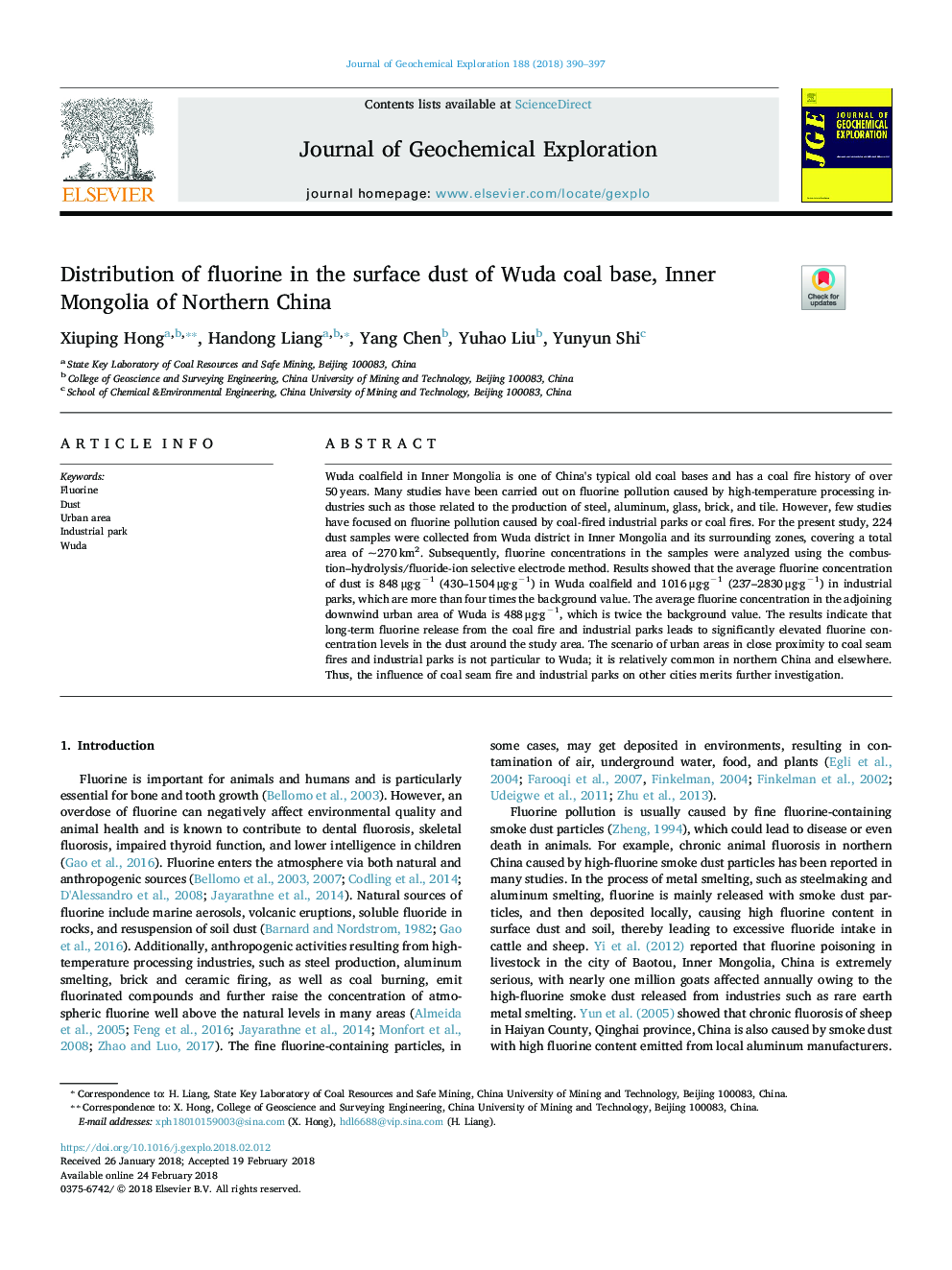| Article ID | Journal | Published Year | Pages | File Type |
|---|---|---|---|---|
| 8866027 | Journal of Geochemical Exploration | 2018 | 8 Pages |
Abstract
Wuda coalfield in Inner Mongolia is one of China's typical old coal bases and has a coal fire history of over 50â¯years. Many studies have been carried out on fluorine pollution caused by high-temperature processing industries such as those related to the production of steel, aluminum, glass, brick, and tile. However, few studies have focused on fluorine pollution caused by coal-fired industrial parks or coal fires. For the present study, 224 dust samples were collected from Wuda district in Inner Mongolia and its surrounding zones, covering a total area of ~270â¯km2. Subsequently, fluorine concentrations in the samples were analyzed using the combustion-hydrolysis/fluoride-ion selective electrode method. Results showed that the average fluorine concentration of dust is 848â¯Î¼g·gâ1 (430-1504â¯Î¼g·gâ1) in Wuda coalfield and 1016â¯Î¼g·gâ1 (237-2830â¯Î¼g·gâ1) in industrial parks, which are more than four times the background value. The average fluorine concentration in the adjoining downwind urban area of Wuda is 488â¯Î¼g·gâ1, which is twice the background value. The results indicate that long-term fluorine release from the coal fire and industrial parks leads to significantly elevated fluorine concentration levels in the dust around the study area. The scenario of urban areas in close proximity to coal seam fires and industrial parks is not particular to Wuda; it is relatively common in northern China and elsewhere. Thus, the influence of coal seam fire and industrial parks on other cities merits further investigation.
Related Topics
Physical Sciences and Engineering
Earth and Planetary Sciences
Economic Geology
Authors
Xiuping Hong, Handong Liang, Yang Chen, Yuhao Liu, Yunyun Shi,
